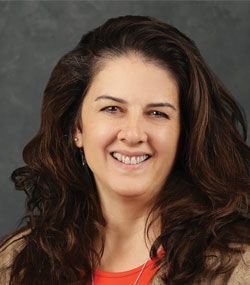
Marilyn Hershey
If they cared about the future of our planet, they would realize that science stands behind our farming practices as a part of the solution to our climate issues, not the problem.Yes, there are areas to improve practices, add efficiencies, and continue to work on our carbon footprint; but this is not news for farmers. This is something we do every year, since as long as I can remember.I will dive deeper into the overall message of climate in a later column, but this time I want to talk about one of the strong solutions that surround our dairy farms: our soil.
Leonardo da Vinci, an artist and inventor, once said, “We know more about the movement of celestial bodies than about the soil underfoot.”
Thankfully, due to science, technology, and forward thinking, we are not stuck in that theory. Science and past experiences have impacted our ability to understand, nurture, and care for our land in ways that we never saw possible centuries ago.
Take the Dust Bowl era, for example. To live through such a time would have been horrid. I cannot imagine being a farmer in those days.
That experience in the 1930s heavily impacted science, technology, and best management practices, stamping even more importance on conservation, tillage, and soil health. The soils that grow our crops are critical for the survival of our farms and the animals that we feed.
There is a continuous process of planting, harvesting, nourishing with nutrients, and repeating the process season after season. When we talk about our crops, it mostly relates to feeding our animals. However, we are becoming more and more aware that farmland and crops are not just nourishing cows; they are also sequestering carbon from the air. That important point is becoming more critical to understand.There is a lot of carbon research wrapped around those kernels of corn. Each year, we learn more about the carbon process, and we begin to understand that healthy soil is one of the solutions to the carbon issue.A few years ago, I saw this quote on social media: “When corn is produced at 200 bushels per acre, every acre of corn absorbs 8 tons of carbon dioxide.” That statement is impactful.
Years ago, our fields didn’t produce 200 bushels per acre, but with seed and soil improvements, we got there. Weather conditions play into our tonnage, and Duane and I might not see that number every year in every field, but improvements are forthcoming every season as we learn to better care for our soil. I have no doubt that we will continue to improve.
I also know that certain parts of the country are way past that number, and 200 bushels is a low assessment. Either way, healthy soils are the avenue for our crops; and whether it is grasses, corn, or soybeans, there is important carbon sequestration occurring as our crops are growing. The healthier and more productive our soils, the better we can help the planet.
I often hear people talk about the problem of deforestation, and I agree that is a problem. However, the de-farming of land is equally concerning. Duane and I look around us, and it does not take long to see that keeping farmland in crops and out of development is a challenge. Theodore Roosevelt once said, “The nation that destroys its soil, destroys itself.” That certainly holds true today. When we look across this vast county and see the acres upon acres of beautiful fields of corn, soybeans, and various species of grass, we can see the amazing importance of keeping our soil healthy and continuing the process of carbon sequestration.
Our soil is one of the most beautiful stories that gets stronger with science and technology. The crops we plant produce more per acre and become healthier with our practices.
More and more food companies are asking for metrics and information around our farming practices. They also want to know more details about our crops and the care of our soils.
Agricultural companies and cooperatives are beginning to collaborate, exchange information, and form this story into shareable material. We better understand the value of our soil and how that contributes to climate change. All this comes together as we aggregate our information to share with others.The continuous earth cycle between air, weather, soil, and crops is good news for us. We have a beautiful story to tell, we have acres of information at our finger tips, and our cows are not killing the planet.
The author and her husband, Duane, own and operate a 550-cow dairy in Cochranville, Pa.










